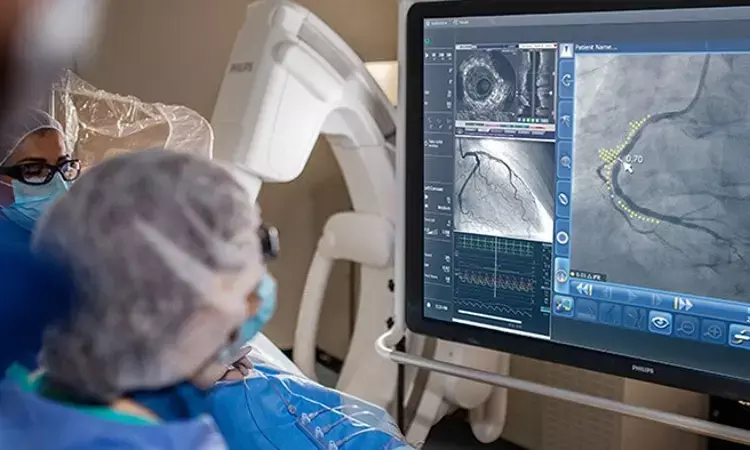- Home
- Medical news & Guidelines
- Anesthesiology
- Cardiology and CTVS
- Critical Care
- Dentistry
- Dermatology
- Diabetes and Endocrinology
- ENT
- Gastroenterology
- Medicine
- Nephrology
- Neurology
- Obstretics-Gynaecology
- Oncology
- Ophthalmology
- Orthopaedics
- Pediatrics-Neonatology
- Psychiatry
- Pulmonology
- Radiology
- Surgery
- Urology
- Laboratory Medicine
- Diet
- Nursing
- Paramedical
- Physiotherapy
- Health news
- Fact Check
- Bone Health Fact Check
- Brain Health Fact Check
- Cancer Related Fact Check
- Child Care Fact Check
- Dental and oral health fact check
- Diabetes and metabolic health fact check
- Diet and Nutrition Fact Check
- Eye and ENT Care Fact Check
- Fitness fact check
- Gut health fact check
- Heart health fact check
- Kidney health fact check
- Medical education fact check
- Men's health fact check
- Respiratory fact check
- Skin and hair care fact check
- Vaccine and Immunization fact check
- Women's health fact check
- AYUSH
- State News
- Andaman and Nicobar Islands
- Andhra Pradesh
- Arunachal Pradesh
- Assam
- Bihar
- Chandigarh
- Chattisgarh
- Dadra and Nagar Haveli
- Daman and Diu
- Delhi
- Goa
- Gujarat
- Haryana
- Himachal Pradesh
- Jammu & Kashmir
- Jharkhand
- Karnataka
- Kerala
- Ladakh
- Lakshadweep
- Madhya Pradesh
- Maharashtra
- Manipur
- Meghalaya
- Mizoram
- Nagaland
- Odisha
- Puducherry
- Punjab
- Rajasthan
- Sikkim
- Tamil Nadu
- Telangana
- Tripura
- Uttar Pradesh
- Uttrakhand
- West Bengal
- Medical Education
- Industry
FFR-guided PCI No Better Than CABG in Improving QOL: FAME 3 Trial

In patients with three-vessel coronary artery disease (CAD), large, randomized trials have demonstrated that coronary revascularization improves the quality of life, with better outcomes after coronary artery bypass grafting (CABG) than after percutaneous coronary intervention (PCI).
A recent study suggests that PCI did not meet the criterion set for noninferiority regarding MACCE (major adverse cardiac and cerebrovascular events) at one year when compared with CABG despite advancement. The study findings were published in the journal Circulation on April 02, 2022.
CABG and PCI have been compared in many randomized trials, but prior studies have not incorporated the latest developments in PCI, particularly the use of fractional flow reserve (FFR) guidance. Therefore, Dr William F. Fearon and his team conducted a study to evaluate the impact of fractional flow reserve (FFR) guidance and current generation, zotarolimus drug-eluting stents (DES) on the quality of life after PCI compared with CABG.
The Fractional Flow Reserve versus Angiography for Multivessel Evaluation (FAME) 3 trial is a multicenter, international trial with patients with three-vessel CAD. In this trial, the researchers evaluated 1500 patients and randomly assigned them to either CABG or FFR-guided PCI. They measured quality of life using the European Quality of Life-5 Dimensions (EQ-5D) questionnaire at baseline, 1 and 12 months. They assessed the Canadian Cardiovascular Class (CCS) angina grade and working status at the same time points and 6 months. The major objective assessed was to compare the EQ-5D summary index at 12 months. They also assessed the angina grade and work status.
Key findings of the study:
- Upon analysis, the researchers found that the EQ-5D summary index at 12 months did not differ between the PCI and CABG groups (difference=0.001).
- They noted that the trajectory of EQ-5D over the 12 months differed between PCI and CABG: at 1 month, EQ-5D was 0.063 higher in the PCI group.
- They found a similar trajectory for the EQ visual analogue scale.
- They noted that the proportion of patients with CCS 2 or greater angina at 12 months was 6.2% vs 3.1% (OR=2.5), respectively in the PCI group compared with the CABG group.
- However, they found a greater percentage of younger patients (<65 years old) were working at 12 months in the PCI group compared with the CABG group (68% vs 57%, OR=3.9).
The authors concluded, "In the FAME 3 trial, quality of life after FFR-guided PCI with current generation DES compared with CABG was similar at one year. The rate of significant angina was low in both groups and not significantly different. The trajectory of improvement in quality of life was significantly better after PCI, as was working status in those less than 65 years old."
For further information:
DOI: https://doi.org/10.1161/CIRCULATIONAHA.122.060049
Medical Dialogues Bureau consists of a team of passionate medical/scientific writers, led by doctors and healthcare researchers. Our team efforts to bring you updated and timely news about the important happenings of the medical and healthcare sector. Our editorial team can be reached at editorial@medicaldialogues.in.
Dr Kamal Kant Kohli-MBBS, DTCD- a chest specialist with more than 30 years of practice and a flair for writing clinical articles, Dr Kamal Kant Kohli joined Medical Dialogues as a Chief Editor of Medical News. Besides writing articles, as an editor, he proofreads and verifies all the medical content published on Medical Dialogues including those coming from journals, studies,medical conferences,guidelines etc. Email: drkohli@medicaldialogues.in. Contact no. 011-43720751


